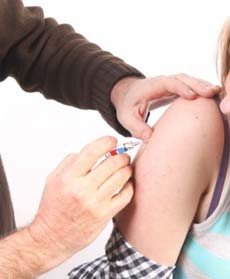fitness news
![]() ,
,![]()
Font size Women’s Health
Cervical Cancer Prevention in Saudi Arabia: It is Time to Call for Action!
– Reported, May 29, 2013
 Pap smear screening, which identifies cytological abnormalities of the cervical transformation zone, has helped to reduce cervical cancer incidence and mortality rates by 70% in developed countries. The incidence of cervical cancer is low in Saudi women. According to the Saudi registry 2007 report, cervical cancer is the 13th most frequent cancer in Saudi women and the 6th most frequent cancer in Saudi women between 15 and 44 years of age.
Pap smear screening, which identifies cytological abnormalities of the cervical transformation zone, has helped to reduce cervical cancer incidence and mortality rates by 70% in developed countries. The incidence of cervical cancer is low in Saudi women. According to the Saudi registry 2007 report, cervical cancer is the 13th most frequent cancer in Saudi women and the 6th most frequent cancer in Saudi women between 15 and 44 years of age.
In Saudi Arabia, most centre using conventional cytology for opportunistic screening for cervical cancer. Recently, some centre adopted the used of liquid based cytology as a methods of screening which help to do HPV testing . There is limited hospital based data regarding pap smear abnormalities. Cervical cancer is caused by sexual exposure to an oncogenic type of the human papillomavirus (HPV), usually types 16 and 18. Currently, little is known about the prevalence on HPV in Saudi Arabia.
Although cervical cancer is both preventable and curable, most women in Saudi Arabia present at advanced stages that require extensive chemo-radiation therapy. This is due to the lack of a proper screening program. Improvement in cervical cancer prevention is provided by HPV screening and vaccination, which is an effective measure for many infectious diseases . Natural HPV infections are inefficient in eliciting a protective immune response. Vaccines have been developed against HPV infection to prevent cervical cancer and other HPV-related diseases. Two vaccine types, a bivalent (Cervarix) vaccine that protects against HPV-16 and -18 and a quadrivalent (Gardasil) vaccine that is effective against HPV-6, -11, -16 and -18, are being widely introduced in Western countries .
Exposure to HPV can be minimized by the vaccination of young women. Vaccination is most effective when applied to young women before they become sexually active (primary prevention). Precancerous cellular changes can be identified through screening, assessment of test-positive cases, and treatment (secondary prevention). The goal of secondary prevention is to prevent cancer; however, it may also identify cervical cancer at an earlier stage, which will increase the likelihood that treatment will be successful. Secondary prevention for cervical cancer involves identifying women with cervical intraepithelial neoplasia and treating it to prevent the occurrence of cancer.
Currently available tests include cytologic evaluation, visual tests, and tests for HPV infection. There are several recognized obstacles to cytology-based screening, including the need for required laboratory infrastructure, trained specialists for processing and reporting, quality control, and a system of communication to the women screened so that
they may receive sufficient treatment. The necessity for multiple visits with cytology-based screening results in significant loss to follow-up. Visual inspection after the application of 3% to 5% acetic acid (VIA) and HPV testing identify a reproducible profile of women who are at high risk of developing precancerous or cancerous lesions . When used alone, or in combination with VIA, HPV DNA testing has shown great promise.
In this part of the world, there should be some concern regarding the quality assurance of cytology findings given the low prevalence of disease. Colposcopy services for the triage of patients with abnormal screening examinations are not widely available. Although gynecologic oncology services are realistically just being developed, they do exist in major centers and have well-trained physicians capable of treating women with invasive disease. Similarly, facilities for radiation oncology have been established.
Foreseeable Challenges
1. To understand the prevalence of high-risk (HR)-HPV infections and the prevalence of abnormal cytology findings in general population.
2. To understand the sexual practices of the population.
a. By region and population group.
3. Implementation of any screening program, either primary or secondary, will be difficult in patients with a sexually transmitted infection.
4. Vaccination is it cost-effective given the low rates of cervical cancer?
5. Introduction of quality assurance in screening and colposcopy.
6. Which screening method should be used and how does one triage the patients?
Suggestions:
1. Basic research:
a. We need to know the prevalence of HR-HPV and which genotypes are present.
i. Regional survey (not just based at one hospital).
ii. Confidential swab of the cervix obtained at a set time for HPV testing, with PCR testing and the possibly of doing cytologic evaluation if positive.
1.Would an antenatal clinic present an opportunity for such testing?
2.Is there any other time when performing a vaginal examination or testing is acceptable?
3.Could one do self-collection with a vaginal swab?
4.We need to look into the acceptability of this.
2. We need to understand the age of sexual debut. Is it similar to the age of marriage? We need to evaluate the age distribution of the women with cervical cancer. This is to ensure that the screening done is not started too early, leading to the possibility of overtreatment.
3. The HPV vaccine is an ideal solution, but it is not likely to be cost effective for all women. Screening with cytology has a low sensitivity (55%) in North America, where there is a high prevalence of abnormal screening tests. In Saudi Arabia, this sensitivity would be further decreased due to a lower incidence of abnormalities. Other options, including VIA triage, are unlikely to be helpful given the low incidence of dysplasia.
4. Evaluation of the acceptability of self collection of HPV-testing.
CREDITS.
For more Saudi Arabia news Click Here